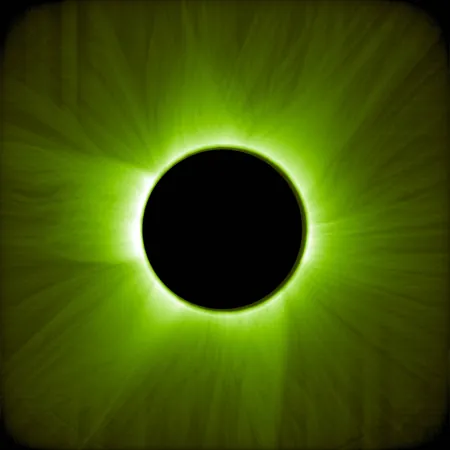
Proba-3's Spectacular Space Eclipse: Unlocking the Secrets of the Sun!
2025-06-23
Author: Ming
A Stunning First in Space Exploration!
The European Space Agency's groundbreaking Proba-3 mission has pulled off a celestial feat: creating an artificial eclipse in space! This innovative approach involves two small satellites, working in tandem to block the Sun's brilliant glow, allowing scientists to capture unprecedented images of the elusive solar corona.
Meet the Dynamic Duo: Occulter and Coronagraph
Dubbed the Occulter and the Coronagraph, these twin satellites function like a colossal camera aimed at the Sun's outer atmosphere. Their collaboration—made possible through cutting-edge technology from Belgium's Centre Spatial de Liège and KU Leuven—transforms the duo into a single, powerful observational tool.
Precision in Motion!
In a remarkable test this past March, the satellites maintained a precise 150-meter distance for hours, using autonomous sensors to keep their alignment within a millimeter. This allowed the Occulter’s 1.4-meter disc to cast an 8-centimeter shadow onto the Coronagraph’s ASPIICS camera, effectively simulating a solar eclipse.
Why Study the Corona?
The Sun's corona is not just a pretty sight; it is a powerhouse driving the solar wind and massive events known as coronal mass ejections (CMEs). These CMEs can result in spectacular auroras but also pose significant risks to power grids and satellites. By gaining clearer insights into the corona through artificial eclipses, researchers can better monitor and predict these solar storms.
Unlocking Solar Mysteries!
The first burst of data from ASPIICS has scientists buzzing with excitement. In tandem with the DARA instrument, which measures total solar energy, and the 3DEES sensor that tracks high-energy electrons, Proba-3 is set to unravel long-standing mysteries about our nearest star.
Extending the Eclipse Experience!
The excitement doesn’t stop there! Proba-3's ability to simulate an eclipse can last up to six hours—far longer than a natural phenomenon that typically lasts only minutes. The team aims for this extended observation to enhance our understanding of solar dynamics.
Revolutionizing Space Weather Forecasts!
Proba-3's mission is a game-changer in solar observation. While traditional coronagraphs fall short, these satellites will delve deeper into the corona, tackling questions previously only accessible during natural eclipses. The high-quality data will significantly improve space weather predictions, safeguarding technologies we rely on daily.
The Future of Autonomous Space Exploration!
With initial successes under their belt, the mission team anticipates achieving full autonomy, allowing the satellites to operate without ground control oversight. This leap could redefine how we study space, enabling astronauts and scientists alike to focus on exploration rather than navigation.
Join the Adventure!
Proba-3, launched on December 5, 2024, aboard an Indian PSLV-XL rocket, is a collaborative masterpiece, uniting efforts from over two dozen European companies. Its promising technology sets the stage for a future of 'eclipses on demand,' as we unlock the ever-mysterious and dynamic nature of the Sun.






 Brasil (PT)
Brasil (PT)
 Canada (EN)
Canada (EN)
 Chile (ES)
Chile (ES)
 Česko (CS)
Česko (CS)
 대한민국 (KO)
대한민국 (KO)
 España (ES)
España (ES)
 France (FR)
France (FR)
 Hong Kong (EN)
Hong Kong (EN)
 Italia (IT)
Italia (IT)
 日本 (JA)
日本 (JA)
 Magyarország (HU)
Magyarország (HU)
 Norge (NO)
Norge (NO)
 Polska (PL)
Polska (PL)
 Schweiz (DE)
Schweiz (DE)
 Singapore (EN)
Singapore (EN)
 Sverige (SV)
Sverige (SV)
 Suomi (FI)
Suomi (FI)
 Türkiye (TR)
Türkiye (TR)
 الإمارات العربية المتحدة (AR)
الإمارات العربية المتحدة (AR)